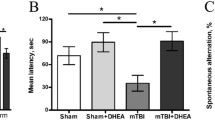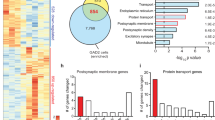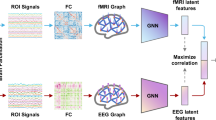Abstract
Dehydroepiandrosterone (DHEA) is a neurosteroid with anxiolytic, antidepressant, and antiglucocorticoid properties. It is endogenously released in response to stress, and may reduce negative affect when administered exogenously. Although there have been multiple reports of DHEA’s antidepressant and anxiolytic effects, no research to date has examined the neural pathways involved. In particular, brain imaging has not been used to link neurosteroid effects to emotion neurocircuitry. To investigate the brain basis of DHEA’s impact on emotion modulation, patients were administered 400 mg of DHEA (N=14) or placebo (N=15) and underwent 3T fMRI while performing the shifted-attention emotion appraisal task (SEAT), a test of emotional processing and regulation. Compared with placebo, DHEA reduced activity in the amygdala and hippocampus, enhanced connectivity between the amygdala and hippocampus, and enhanced activity in the rACC. These activation changes were associated with reduced negative affect. DHEA reduced memory accuracy for emotional stimuli, and also reduced activity in regions associated with conjunctive memory encoding. These results demonstrate that DHEA reduces activity in regions associated with generation of negative emotion and enhances activity in regions linked to regulatory processes. Considering that activity in these regions is altered in mood and anxiety disorders, our results provide initial neuroimaging evidence that DHEA may be useful as a pharmacological intervention for these conditions and invite further investigation into the brain basis of neurosteroid emotion regulatory effects.
Similar content being viewed by others
Log in or create a free account to read this content
Gain free access to this article, as well as selected content from this journal and more on nature.com
or
References
Alhaj HA, Massey AE, McAllister-Williams RH (2006). Effects of DHEA administration on episodic memory, cortisol and mood in healthy young men: a double-blind, placebo-controlled study. Psychopharmacology (Berl) 188: 541–551.
Anderson AK, Christoff K, Panitz D, De Rosa E, Gabrieli JD (2003). Neural correlates of the automatic processing of threat facial signals. J Neurosci 23: 5627–5633.
Arlt W, Justl HG, Callies F, Reincke M, Hubler D, Oettel M et al (1998). Oral dehydroepiandrosterone for adrenal androgen replacement: pharmacokinetics and peripheral conversion to androgens and estrogens in young healthy females after dexamethasone suppression. J Clin Endocrinol Metab 83: 1928–1934.
Barrett-Connor E, von Muhlen D, Laughlin GA, Kripke A (1999). Endogenous levels of dehydroepiandrosterone sulfate, but not other sex hormones, are associated with depressed mood in older women: the Rancho Bernardo Study. J Am Geriatr Soc 47: 685–691.
Baulieu EE, Robel P (1998). Dehydroepiandrosterone (DHEA) and dehydroepiandrosterone sulfate (DHEAS) as neuroactive neurosteroids. Proc Natl Acad Sci USA 95: 4089–4091.
Bloch M, Rubinow DR, Berlin K, Kevala KR, Kim HY, Schmidt PJ (2006). Monoamines and neurosteroids in sexual function during induced hypogonadism in healthy men. Arch Gen Psychiatry 63: 450–456.
Bloch M, Schmidt PJ, Danaceau MA, Adams LF, Rubinow DR (1999). Dehydroepiandrosterone treatment of midlife dysthymia. Biol Psychiatry 45: 1533–1541.
Cardounel A, Regelson W, Kalimi M (1999). Dehydroepiandrosterone protects hippocampal neurons against neurotoxin-induced cell death: mechanism of action. Proc Soc Exp Biol Med 222: 145–149.
Correa MS, Balardin JB, Caldieraro MA, Fleck MP, Argimon I, Luz C et al (2012). Contextual recognition memory deficits in major depression are suppressed by cognitive support at encoding. Biol Psychol 89: 293–299.
Cyr M, Landry M, Di Paolo T (2000). Modulation by estrogen-receptor directed drugs of 5-hydroxytryptamine-2A receptors in rat brain. Neuropsychopharmacology 23: 69–78.
Davis SR, Shah SM, McKenzie DP, Kulkarni J, Davison SL, Bell RJ (2008). Dehydroepiandrosterone sulfate levels are associated with more favorable cognitive function in women. J Clin Endocrinol Metab 93: 801–808.
do Vale S, Martin Martins J, Fagundes MJ, do Carmo I (2011). Plasma dehydroepiandrosterone-sulphate is related to personality and stress response. Neuro Endocrinol Lett 32: 442–448.
Dyck M, Loughead J, Kellermann T, Boers F, Gur RC, Mathiak K (2011). Cognitive versus automatic mechanisms of mood induction differentially activate left and right amygdala. NeuroImage 54: 2503–2513.
Ekman P, Friesen WV (1976) Pictures of Facial Affect. Consulting Psychologists Press: Palo Alto, CA.
Etkin A, Wager TD (2007). Functional neuroimaging of anxiety: a meta-analysis of emotional processing in PTSD, social anxiety disorder, and specific phobia. Am J Psychiatry 164: 1476–1488.
Fleshner M, Pugh CR, Tremblay D, Rudy JW (1997). DHEA-S selectively impairs contextual-fear conditioning: support for the antiglucocorticoid hypothesis. Behav Neurosci 111: 512–517.
Fonda SJ, Bertrand R, O’Donnell A, Longcope C, McKinlay JB (2005). Age, hormones, and cognitive functioning among middle-aged and elderly men: cross-sectional evidence from the Massachusetts male aging study. J Gerontol A Biol Sci Med Sci 60: 385–390.
Garfinkel SN, Ho SS, Wang X, Abelson JL, Taylor SF, Gonzalez R et al (2013). Cortisol facilitates memory by enhancing hippocampal activation and functional connectivity. under review.
Grillon C, Pine DS, Baas JM, Lawley M, Ellis V, Charney DS (2006). Cortisol and DHEA-S are associated with startle potentiation during aversive conditioning in humans. Psychopharmacology (Berl) 186: 434–441.
Grimley Evans J, Malouf R, Huppert FAH, van Niekerk JK (2006). Dehydroepiandrosterone (DHEA) supplementation for cognitive function in healthy elderly people. Cochrane Database Syst Rev Art No: CD006221.
Gross JJ, Thompson RA (2007). Emotion regulation conceptual foundations. In: Gross JJ, (ed) Handbook of emotion regulation. Guillford Press: New York. pp 3–24.
Hofmann SG, Ellard KK, Siegle GJ (2012). Neurobiological correlates of cognitions in fear and anxiety: a cognitive-neurobiological information-processing model. Cogn Emot 26: 282–299.
Johnson DR (2009). Goal-directed attentional deployment to emotional faces and individual differences in emotional regulation. J Res Pers 43: 8–13.
Kaminski RM, Marini H, Kim WJ, Rogawski MA (2005). Anticonvulsant activity of androsterone and etiocholanolone. Epilepsia 46: 819–827.
Kancheva R, Hill M, Novak Z, Chrastina J, Kancheva L, Starka L (2011). Neuroactive steroids in periphery and cerebrospinal fluid. Neuroscience 191: 22–27.
Kanter ED, Wilkinson CW, Radant AD, Petrie EC, Dobie DJ, McFall ME et al (2001). Glucocorticoid feedback sensitivity and adrenocortical responsiveness in posttraumatic stress disorder. Biol Psychiatry 50: 238–245.
Klumpp H, Ho SS, Taylor SF, Phan KL, Abelson JL, Liberzon I (2011). Trait anxiety modulates anterior cingulate activation to threat interference. Depress Anxiety 28: 194–201.
Lacroix C, Fiet J, Benais JP, Gueux B, Bonete R, Villette JM et al (1987). Simultaneous radioimmunoassay of progesterone, androst-4-enedione, pregnenolone, dehydroepiandrosterone and 17-hydroxyprogesterone in specific regions of human brain. J Steroid Biochem 28: 317–325.
Liberzon I, Taylor SF, Fig LM, Decker LR, Koeppe RA, Minoshima S (2000). Limbic activation and psychophysiologic responses to aversive visual stimuli. Interaction with cognitive task. Neuropsychopharmacology 23: 508–516.
Lieberman MD, Inagaki TK, Tabibnia G, Crockett MJ (2011). Subjective responses to emotional stimuli during labeling, reappraisal, and distraction. Emotion 11: 468–480.
Maninger N, Wolkowitz OM, Reus VI, Epel ES, Mellon SH (2009). Neurobiological and neuropsychiatric effects of dehydroepiandrosterone (DHEA) and DHEA sulfate (DHEAS). Front Neuroendocrinol 30: 65–91.
Maren S, Holt W (2000). The hippocampus and contextual memory retrieval in Pavlovian conditioning. Behav Brain Res 110: 97–108.
Marx CE, Trost WT, Shampine L, Behm FM, Giordano LA, Massing MW et al (2006). Neuroactive steroids, negative affect, and nicotine dependence severity in male smokers. Psychopharmacology (Berl) 186: 462–472.
Melchior CL, Ritzmann RF (1994). Dehydroepiandrosterone is an anxiolytic in mice on the plus maze. Pharmacol Biochem Behav 47: 437–441.
Milad MR, Quirk GJ (2002). Neurons in medial prefrontal cortex signal memory for fear extinction. Nature 420: 70–74.
Morales AJ, Haubrich RH, Hwang JY, Asakura H, Yen SS (1998). The effect of six months treatment with a 100 mg daily dose of dehydroepiandrosterone (DHEA) on circulating sex steroids, body composition and muscle strength in age-advanced men and women. Clin Endocrinol (Oxf) 49: 421–432.
Morsink LF, Vogelzangs N, Nicklas BJ, Beekman AT, Satterfield S, Rubin SM et al (2007). Associations between sex steroid hormone levels and depressive symptoms in elderly men and women: results from the Health ABC study. Psychoneuroendocrinology 32: 874–883.
Murty VP, Ritchey M, Adcock RA, LaBar KS (2011). Reprint of: fMRI studies of successful emotional memory encoding: a quantitative meta-analysis. Neuropsychologia 49: 695–705.
Naert G, Maurice T, Tapia-Arancibia L, Givalois L (2007). Neuroactive steroids modulate HPA axis activity and cerebral brain-derived neurotrophic factor (BDNF) protein levels in adult male rats. Psychoneuroendocrinology 32: 1062–1078.
Naylor JC, Hulette CM, Steffens DC, Shampine LJ, Ervin JF, Payne VM et al (2008). Cerebrospinal fluid dehydroepiandrosterone levels are correlated with brain dehydroepiandrosterone levels, elevated in Alzheimer’s disease, and related to neuropathological disease stage. J Clin Endocrinol Metab 93: 3173–3178.
Phan KL, Taylor SF, Welsh RC, Ho SH, Britton JC, Liberzon I (2004). Neural correlates of individual ratings of emotional salience: a trial-related fMRI study. NeuroImage 21: 768–780.
Quirk GJ, Mueller D (2008). Neural mechanisms of extinction learning and retrieval. Neuropsychopharmacology 33: 56–72.
Rasmusson AM, Schnurr PP, Zukowska Z, Scioli E, Forman DE (2010). Adaptation to extreme stress: post-traumatic stress disorder, neuropeptide Y and metabolic syndrome. Exp Biol Med (Maywood) 235: 1150–1162.
Rasmusson AM, Vasek J, Lipschitz DS, Vojvoda D, Mustone ME, Shi Q et al (2004). An increased capacity for adrenal DHEA release is associated with decreased avoidance and negative mood symptoms in women with PTSD. Neuropsychopharmacology 29: 1546–1557.
Reddy DS, Kaur G, Kulkarni SK (1998). Sigma (sigma1) receptor mediated anti-depressant-like effects of neurosteroids in the Porsolt forced swim test. Neuroreport 9: 3069–3073.
Ritsner MS, Gibel A, Ratner Y, Tsinovoy G, Strous RD (2006). Improvement of sustained attention and visual and movement skills, but not clinical symptoms, after dehydroepiandrosterone augmentation in schizophrenia: a randomized, double-blind, placebo-controlled, crossover trial. J Clin Psychopharmacol 26: 495–499.
Sageman S, Brown RP (2006). 3-acetyl-7-oxo-dehydroepiandrosterone for healing treatment-resistant posttraumatic stress disorder in women: 5 case reports. J Clin Psychiatry 67: 493–496.
Schmidt PJ, Daly RC, Bloch M, Smith MJ, Danaceau MA, St Clair LS et al (2005). Dehydroepiandrosterone monotherapy in midlife-onset major and minor depression. Arch Gen Psychiatry 62: 154–162.
Schneider F, Grodd W, Weiss U, Klose U, Mayer KR, Nagele T et al (1997). Functional MRI reveals left amygdala activation during emotion. Psychiatry Res 76: 75–82.
Schneider F, Gur RC, Gur RE, Muenz LR (1994). Standardized mood induction with happy and sad facial expressions. Psychiatry Res 51: 19–31.
Sheehan DV, Lecrubier Y, Sheehan KH, Amorim P, Janavs J, Weiller E et al (1998). The Mini-International Neuropsychiatric Interview (M.I.N.I.): the development and validation of a structured diagnostic psychiatric interview for DSM-IV and ICD-10. J Clin Psychiatry 59 Suppl 20, 22–33 quiz 34-57.
Spivak B, Maayan R, Kotler M, Mester R, Gil-Ad I, Shtaif B et al (2000). Elevated circulatory level of GABA(A): antagonistic neurosteroids in patients with combat-related post-traumatic stress disorder. Psychol Med 30: 1227–1231.
Sripada RK, Marx CE, King AP, Rampton JC, Ho SH, Liberzon I (2013). Allopregnanolone Elevations Following Pregnenolone Administration are Associated with Enhanced Activation of Emotion Regulation Neurocircuits. Biol Psychiatry S0006-3223: 01093-1.
Tabibnia G, Lieberman MD, Craske MG (2008). The lasting effect of words on feelings: words may facilitate exposure effects to threatening images. Emotion 8: 307–317.
Ward B (2000). Simultaneous inference for fMRI data http://afni.nimh.nih.gov/pub/dist/doc/manual/AlphaSim.pdf.
Watson D, Clark LA (1994) Manual for the Positive and Negative Affect Schedule—Expanded Form. University of Iowa: Iowa City, IA.
Whalen PJ, Shin LM, McInerney SC, Fischer H, Wright CI, Rauch SL (2001). A functional MRI study of human amygdala responses to facial expressions of fear versus anger. Emotion 1: 70–83.
Wolkowitz OM, Reus VI, Keebler A, Nelson N, Friedland M, Brizendine L et al (1999). Double-blind treatment of major depression with dehydroepiandrosterone. Am J Psychiatry 156: 646–649.
Wong SY, Leung JC, Kwok T, Ohlsson C, Vandenput L, Leung PC et al (2011). Low DHEAS levels are associated with depressive symptoms in elderly Chinese men: results from a large study. Asian J Androl 13: 898–902.
Yehuda R, Bierer LM, Pratchett LC, Pelcovitz M (2010). Using biological markers to inform a clinically meaningful treatment response. Ann N Y Acad Sci 1208: 158–163.
Zajda ME, Krzascik P, Hill M, Majewska MD (2012). Psychomotor and rewarding properties of the neurosteroids dehydroepiandrosterone sulphate and androsterone: effects on monoamine and steroid metabolism. Acta Neurobiol Exp (Wars) 72: 65–79.
Zhou Z, Ding M, Chen Y, Wright P, Lu Z, Liu Y (2009). Detecting directional influence in fMRI connectivity analysis using PCA based Granger causality. Brain Res 1289: 22–29.
Acknowledgements
This work is supported by grants from the National Institute of Mental Health (R24 MH075999) to IL, from the Telemedicine and Advanced Technology Research Center (W81XWH-08-2-0208) to IL and AK, from a VA Career Development Transition Award to CM, and by the Veterans Affairs Mid-Atlantic Mental Illness, Research, Education and Clinical Center.
Author information
Authors and Affiliations
Corresponding author
Ethics declarations
Competing interests
Dr Marx discloses that she is an applicant or co-applicant on pending US patent applications on the use of neurosteroids and derivatives for the treatment of central nervous system disorders and for lowering cholesterol (no patents issued, no licensing in place), and she is an unpaid scientific advisor to Sage Therapeutics. The remaining authors declare no conflict of interest.
Additional information
Supplementary Information accompanies the paper on the Neuropsychopharmacology website
Supplementary information
Rights and permissions
About this article
Cite this article
Sripada, R., Marx, C., King, A. et al. DHEA Enhances Emotion Regulation Neurocircuits and Modulates Memory for Emotional Stimuli. Neuropsychopharmacol 38, 1798–1807 (2013). https://doi.org/10.1038/npp.2013.79
Received:
Revised:
Accepted:
Published:
Issue date:
DOI: https://doi.org/10.1038/npp.2013.79
Keywords
This article is cited by
-
Psychobiological risk factors for suicidal thoughts and behaviors in adolescence: a consideration of the role of puberty
Molecular Psychiatry (2022)
-
Dehydroepiandrosterone: a potential therapeutic agent in the treatment and rehabilitation of the traumatically injured patient
Burns & Trauma (2019)
-
Peripheral blood neuroendocrine hormones are associated with clinical indices of sport-related concussion
Scientific Reports (2019)
-
Violence Victimization Predicts Body Mass Index One Decade Later among an Urban Sample of African American Young Adults: Sex as a Moderator and Dehydroepiandrosterone as a Mediator
Journal of Urban Health (2019)
-
Stress Response Modulation Underlying the Psychobiology of Resilience
Current Psychiatry Reports (2018)



